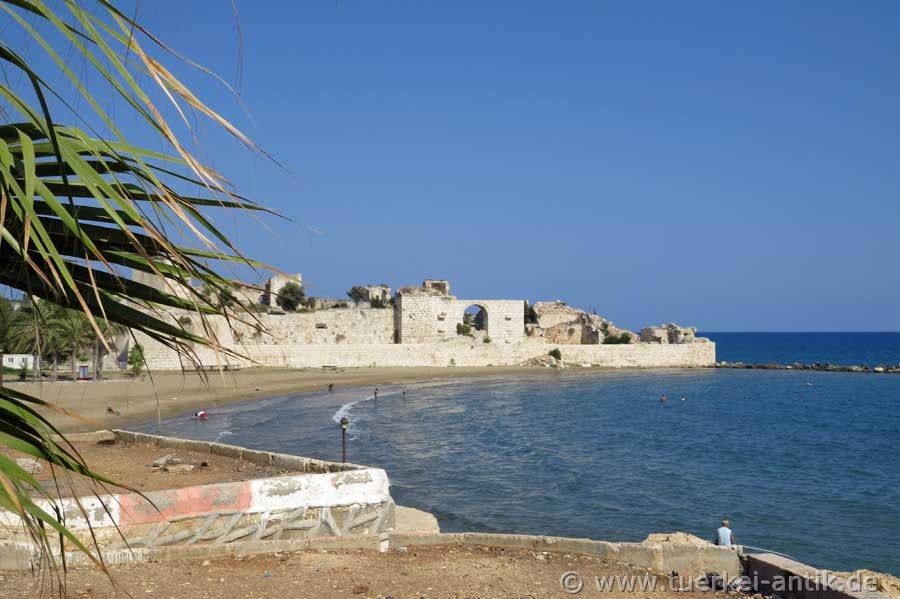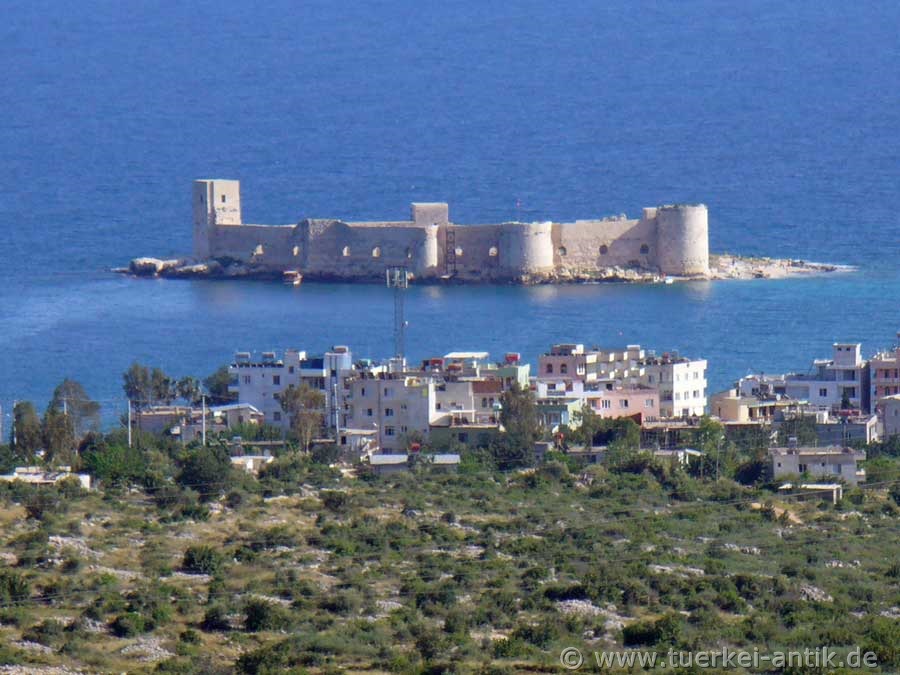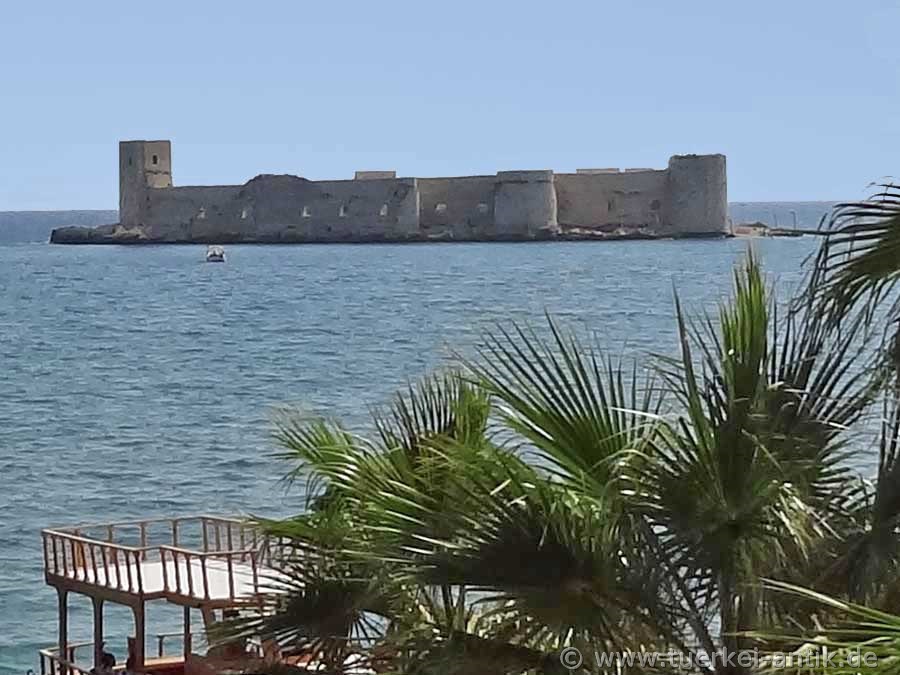 |
| Korykos in Cilicia | |||
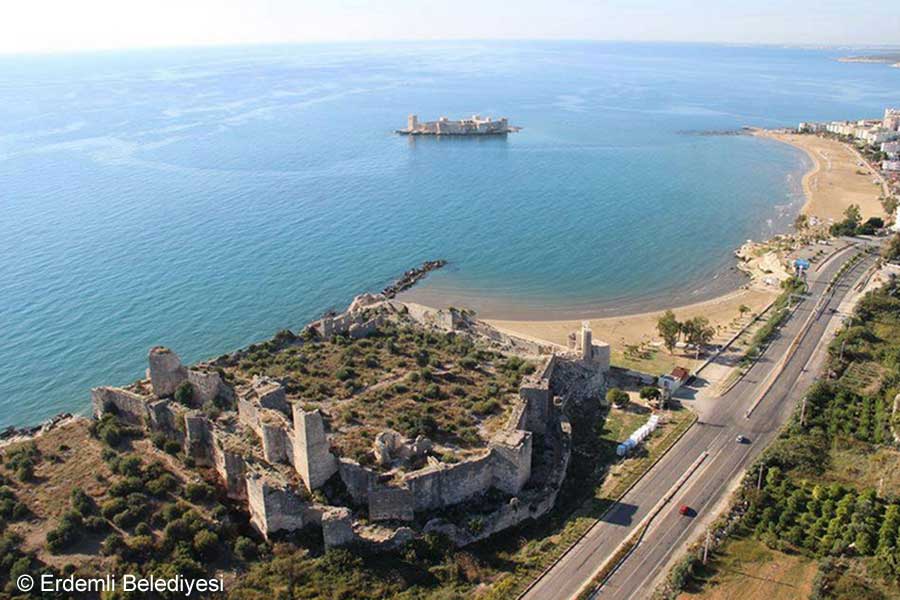 |
|
||
| The mainland castle and sea castle | |||
|
Too much is not known about the ancient Korykos, especially since it is not yet excavated and thus largely unexplored. According to Herodotus, (484-425 BC) the father of historiography, the city was founded by the Cypriot prince Korykos. First mentioned in history is Korykos, when in 97 BC the king of Syria, Antiochos III, conquered the Cilician Gates and the Mediterranean coast from the Ptolemies, the Greek rulers in Egypt. |
|||
|
|
|||
| The outer walls of the mainland castle on the silted up side of the former harbour | |||
|
Directly at the sea, on a former peninsula, stand the ruins of the so-called mainland castle, a fortress from the middle of the 13th century, which at that time was naturally protected from three sides. Towards the countryside, the castle, built on the remains of a much earlier fortification, was protected by a deep moat carved out of the rock. For the construction of the medieval castle complex, as it is easy to see, almost exclusively remains of the ancient building substance were used. For example, the remains of column drums and altar stones can easily be seen in the walls on the north side. The castle protected the now silted harbour. |
|||
|
|
|||
| The sea castle, also girls castle | |||
|
The sea castle, the "girls castle", after which today's place got its name, is better known, certainly also because it can be seen from afar. (Kizkalesi = Turkish fortress for girls) This castle also served to protect the harbour. A pier once connected the two castles. The legend goes that a sultan had the castle built to protect his daughter from a snake bite prophesied to her. The deadly bite nevertheless overtook the daughter, as the snake was brought to the island in a fruit basket. However, this legend is often heard in Turkey, also around the girl's tower in the Bosporus near Istanbul. |
|||
|
|
|||
| The sea castle | |||
|
|
|||
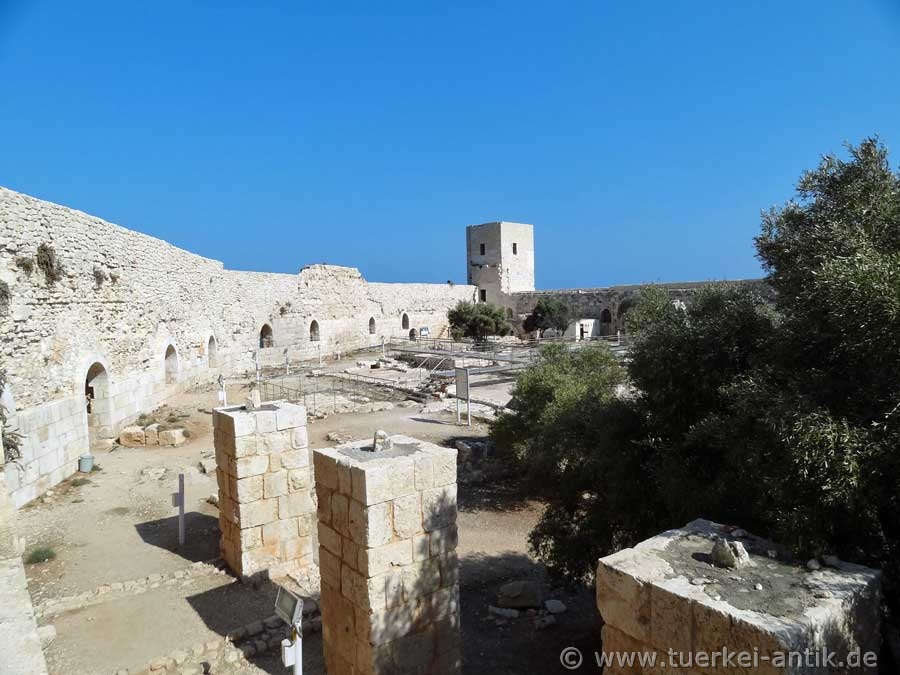 |
|||
| In the sea castle | |||
|
The port city of Korykos was located at today's Kizkalesi, in rough Cilicia in the area between the rivers Kalykadnos (today Göksu) in the west and Lamos (today Limonlu Çayi) in the east. The neighbouring seaports in the west are Seleukia at Kalykadnos, today's Silifke and Korasion (Atakent), and in the east Elaiussa Sebaste (Ayas) and Lamos (Limonlu). In the mountainous hinterland are numerous places from Hellenistic to Byzantine times, almost all of which were under the influence of the priesthood of Olba and Diokaisareia. |
|||
|
|
|||
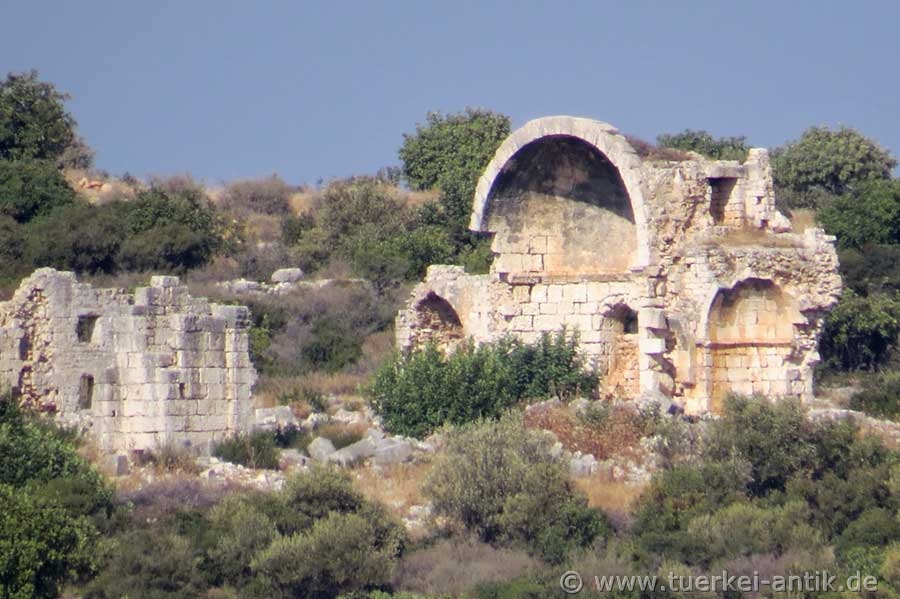 |
|||
| Byzantine Basilica | |||
|
|
|||
|
Today, the important port city has extensive, largely overgrown fields of ruins to be seen. These include numerous churches, remains of the city wall and three extensive necropolises with rock tombs and sarcophagi. The mainland castle and sea castle from late Byzantine and Armenian times have been preserved as ruins. There are only a few remains of buildings from Roman times, but in the Christian buildings and above all in the country castle numerous components from earlier times are used as spoils. |
|||
| Photos: @chim, Monika P. | |||
| Translation aid: www.DeepL.com/Translator | |||
| Source: Wikipedia and others | |||
|
|
|||

